The application of a gravity-specific stress (e.g. LBNP), in combination with exercise, prevents cardiovascular deconditioning in space flight. KAATSU training is a method to induce blood pooling in capacitance vessels by restricting venous return (as with LBNP) and which when combined with low-intensity resistance (RE) exercise produces remarkable muscle mass and muscle strength gains. The purpose of this study was to investigate the hemodynamic and neurohumonal responses induced by KAATSU in combination with leg RE (30 % 1 RM), during simulated weightlessness (6°head-down tilt for 24 h, n=7). Following 24 h bed rest 6° head-down tilt, body mass was decreased from 75.3 ± 3.9 to 73.3 ± 3.8 Kg (P<0.01). Blood volume (BV) and plasma volume (PV) were reduced by −4.4 ± 1.4% and −7.9 ± 2.5%, respectively. During RE, BV and PV were significantly decreased; the changes with KAATSU induced a lower-body venous pooling, resulting in a sustained decrease in stroke volume (SV; from 77.0 ± 4.4 ml to 55.9 ± 5.1 ml; P<0.01) that was comparable to resting SV while standing. Consequently, RE heart rate (HR) was greater with KAATSU. The serum concentrations of plasma renin activity (PRA), vasopressin (ADH), noradrenaline (NOR), and lactate were also significantly elevated during RE with KAATSU as compared to control RE. These hemodynamic and neurohumoral responses following head-down tilt and during RE closely approximate the gravity-specific stress observed with LBNP. Thus, when used in combination with RE, KAATSU may be a useful countermeasure in microgravity.
抄録全体を表示
